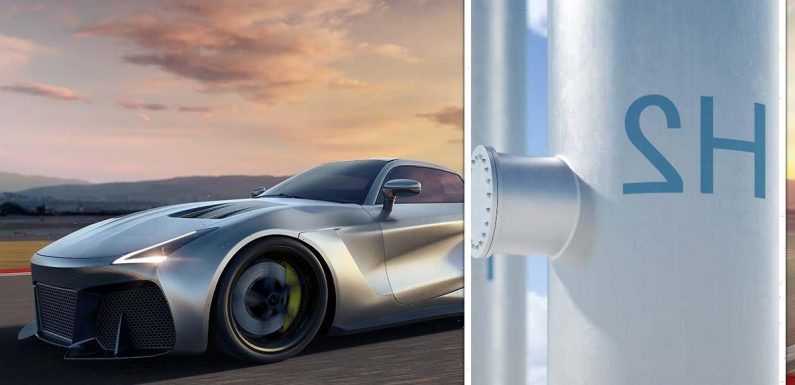
SGN details their H100 Fife hydrogen network project
We use your sign-up to provide content in ways you’ve consented to and to improve our understanding of you. This may include adverts from us and 3rd parties based on our understanding. You can unsubscribe at any time. More info
By the end of this decade, the UK could power its cars, trucks, and boilers with a new fuel, harnessing the most abundant element in the universe, experts told Express.co.uk. As Britain looks for ways to reach its legally binding commitment of net zero carbon emissions by 2050, while also ensuring its energy security, many have pointed to hydrogen as an answer. The gas — which can be split out of water by electrolysis — can be used for cooking and heating and when burnt only produces water as a byproduct, rather than fossil fuels. Experts even believe that once the hydrogen industry grows large enough, it could be piped into homes in much the same way that conventional gas is at present.
However, experts, including Mei Chia, Senior Business Lead in Carbon Capture at Honeywell Sustainable Technology Solutions noted that the road to get there is long, and can be broken down into multiple stages leading to commercial transportation and residential use.
Speaking to Express.co.uk, she said: “The energy transition will only happen when you combine all of the different levers that you have to reduce CO2.
“That includes post-combustion capture on things like power plants, steel plants, cement plants, and it also includes generating clean hydrogen from both blue and green hydrogen. We see that blue hydrogen is a key enabler to create the ecosystem that allows green hydrogen to scale.
“The hydrogen you have in the transition pathways is based on the hydrogen council from now until 2025- it will continue to be used in industrial places, primarily in brief in-process applications in industrial heating.


“From there it is going to slowly make that transition a pivot when that capacity of hydrogen is enough that it converts to mobility and power generation. That means cars, aviation, any number of those areas.”
She added that until 2030, hydrogen would primarily only be used in industrial uses, after which it would begin transitioning into cars, residential heating, industrial heating and power generation.
Honeywell predicts that by the end of the decade, grey hydrogen, which is created from natural gas without capturing the carbon released, will jump from 60 million tonnes produced to 660 million tonnes, accounting for about 22 percent of the energy mix.
Hydrogen is often described in colours to signify how it is produced, with “blue” signifying that it is generated from natural gas, with the carbon captured and stored, while “green” means it is generated from electricity, which heavily favours renewables.

Ms Chia continued: “The grey hydrogen needs to be transitioned into blue hydrogen, where we take out the hydrogen that is being produced from fossil fuels and fill up the pipeline, the plants, with clean hydrogen. So I would say industrial leading, and then going downstream into residential and smaller uses.
“If you look at the industry as a whole, you have multiple different sources of CO2 that is being emitted in an existing industrial plant, each one of those sources will have different pathways towards how you abate the CO2 or capture it.
“You have a combined power plant within the facility, and you’re doing power generation with natural gas, you’d have post-combustion on that CO2. Inside your plant where you are heating furnaces, and drying, you have such a distributed play within there, those will likely benefit from hydrogen as a transition to natural gas.”
In the Government’s Energy Security Strategy, the UK has announced plans to “double ambitions to up to 10GW of low carbon hydrogen production capacity by 2030, subject to affordability and value for money, with at least half of this coming from electrolytic hydrogen.”
DON’T MISS:
UK government pinpoints exact times UK homes to face winter blackouts [REPORT]
British Gas primed for major ‘first step’ to swerve blackouts [INSIGHT]
Heat pump scheme torn apart as Rishi urged to scrap ‘immoral waste’ [REVEAL]


The Government has also planned to blend up to 20 percent hydrogen into the natural gas grid and will take a final decision by the end of next year.
The Strategy read: “The UK will look to be a leader in developing a domestic source of this super-fuel, in this ever-increasing internationally competitive space. And we fully support hydrogen as a relatively frictionless way to decarbonise our lives in the near-term.”
Ms Chia continued: “With policies that are in place today in Europe and North America, if you switch to hydrogen, the tax incentives or the taxes on CO2 will definitely enable that transition from a capital perspective.
“The technology that we’re putting out into the marketplace right now, they’re commercially proven technologies. They have been used in the industry to separate processed gases for more than five decades.”
Source: Read Full Article